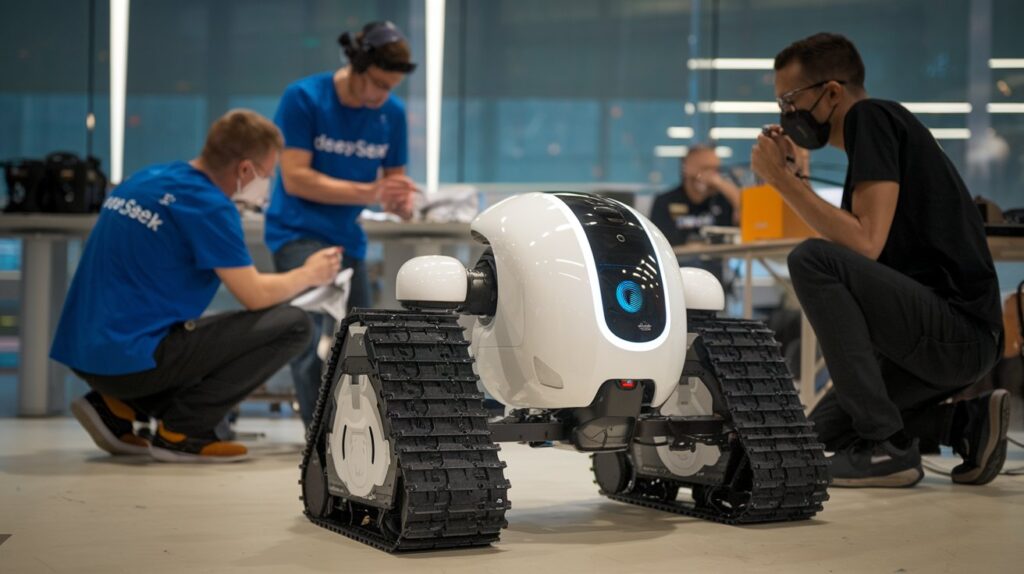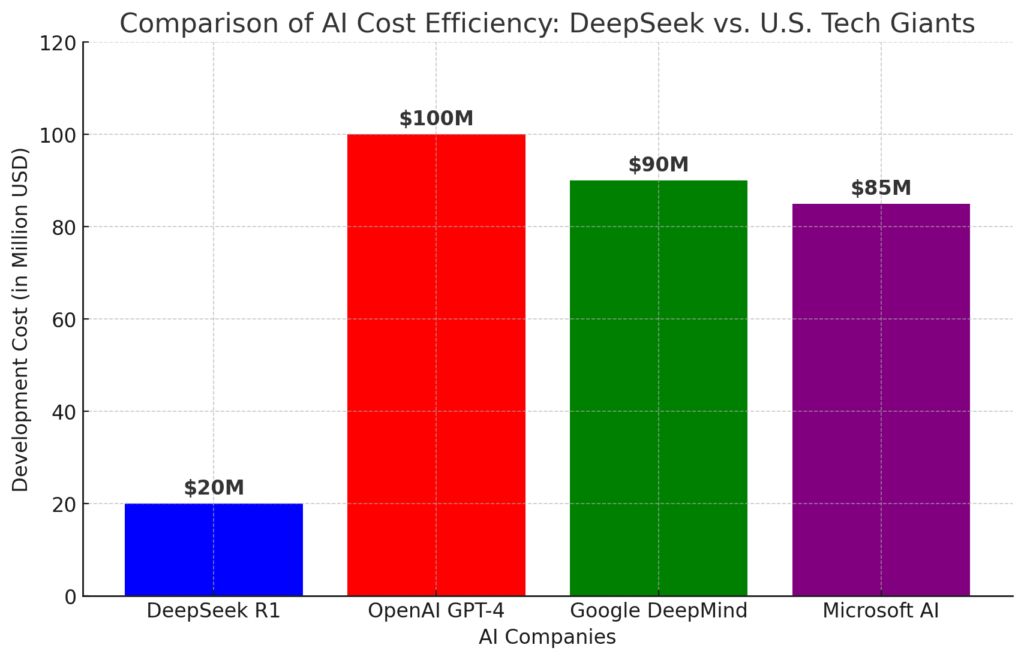DeepSeek’s AI Breakthrough A ‘Sputnik Moment’ for American Tech Giants
The artificial intelligence (AI) race has entered a new phase with the emergence of DeepSeek, a Chinese AI startup that has introduced its groundbreaking open-source model, DeepSeek R1. Unlike traditional AI giants that rely on massive computational resources and extensive funding, DeepSeek has focused on efficiency, reasoning, and cost-effectiveness—sending shockwaves across Silicon Valley.

Many analysts are now comparing DeepSeek’s breakthrough to the Sputnik moment, a historical reference to when the Soviet Union’s launch of the first satellite forced the United States to accelerate its space program. In the same way, DeepSeek’s AI development strategy has disrupted the dominance of U.S. tech giants, urging them to rethink their AI models.
Table of Contents
DeepSeek’s R1: A Game-Changer in AI Development
DeepSeek’s R1 model is unique because it achieves high-level performance without relying on excessive computational power. Historically, tech companies like OpenAI, Google DeepMind, and Microsoft have invested billions of dollars in training large AI models. However, DeepSeek has proven that efficiency-driven AI models can compete with even the most advanced systems at a fraction of the cost.
According to recent reports, DeepSeek R1 delivers capabilities on par with GPT-4 but at significantly lower costs, allowing startups and smaller enterprises to leverage AI without requiring access to massive data centers.
“DeepSeek’s AI model is changing the way we think about artificial intelligence. This could be the moment when AI development truly shifts from being resource-intensive to more accessible and efficient.” – Industry Expert Analysis
How DeepSeek’s AI Model Threatens U.S. Tech Giants
The impact of DeepSeek’s breakthrough is already visible. Major U.S. tech giants, including NVIDIA, Google, Amazon, and Microsoft, have seen significant fluctuations in stock value following the announcement of DeepSeek R1. Investors are beginning to question whether traditional AI companies can maintain their dominance if smaller, cost-efficient AI models become the norm.

Here’s why DeepSeek’s R1 is a direct threat to American AI leaders:
- Cost Efficiency – While OpenAI’s latest models require billions in investment, DeepSeek has achieved similar results on a much smaller budget.
- Open-Source Accessibility – Unlike proprietary AI models, DeepSeek R1 is open-source, meaning developers worldwide can contribute to and improve upon the technology.
- Computational Resource Optimization – DeepSeek has found a way to minimize hardware dependency, making AI development more affordable for businesses.
This shift in AI development has sparked concerns among policymakers and business leaders in the U.S., who now fear that China’s AI advancements might outpace American innovation in the coming years.
The AI Arms Race: Can the U.S. Keep Up?
The rise of DeepSeek has intensified discussions about America’s AI strategy. With China making significant advances despite U.S. export restrictions, some experts believe that American tech firms must innovate beyond traditional compute-heavy AI models to stay competitive.
Many believe that this breakthrough could lead to a new wave of AI startups that prioritize efficiency over brute-force computing power, potentially reshaping the global AI market.
“DeepSeek’s R1 could mark a turning point for AI development. The focus is shifting towards smarter, leaner, and more accessible AI models, rather than just bigger and more expensive ones.” – AI Researcher
What This Means for the Future of AI?
The implications of DeepSeek’s AI model extend beyond competition between China and the U.S. Here’s what this development means for the AI industry:
- Lower AI development costs → More businesses can afford to integrate AI into their operations.
- Open-source AI models gaining traction → AI technology will become more accessible and collaborative.
- Increased focus on efficiency in AI training → Tech companies may adopt new methods to optimize AI performance without increasing computational costs.
If DeepSeek’s AI development strategy proves sustainable, it could force the biggest tech companies to innovate in new directions—moving away from sheer processing power and toward smarter, cost-effective AI solutions.
Conclusion: A New Era of AI Innovation Begins
DeepSeek’s R1 model represents a major disruption in the AI industry, signaling a potential shift in the global AI power balance. This could be the beginning of a new AI era—where efficiency, open-source collaboration, and accessibility redefine the playing field.
For the U.S. to maintain its AI leadership, it must adapt quickly, invest in efficient AI development strategies, and encourage innovation that prioritizes both performance and accessibility.
The future of AI is changing fast—will American tech giants be able to keep up? [USnewsSphere.com]








